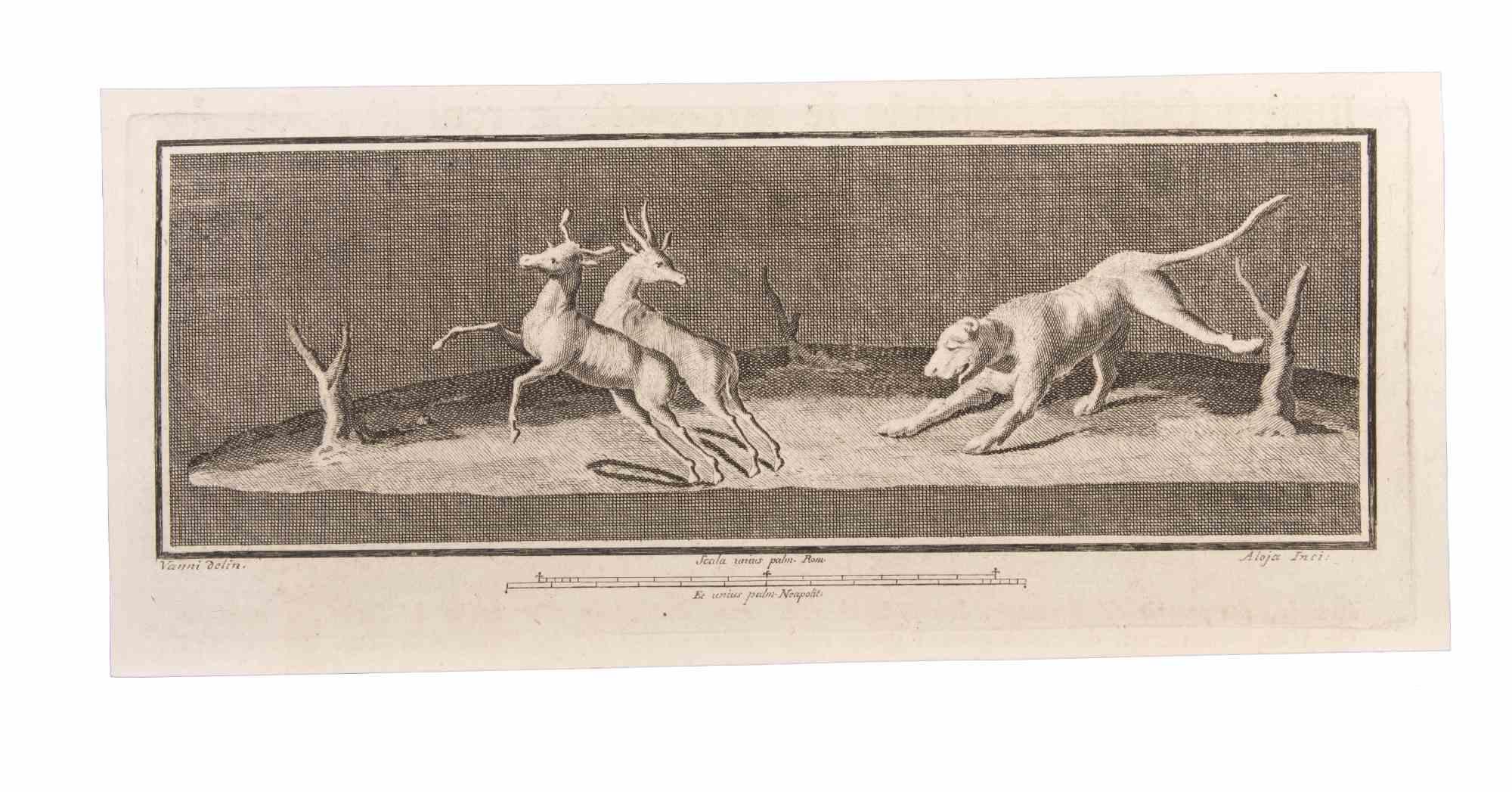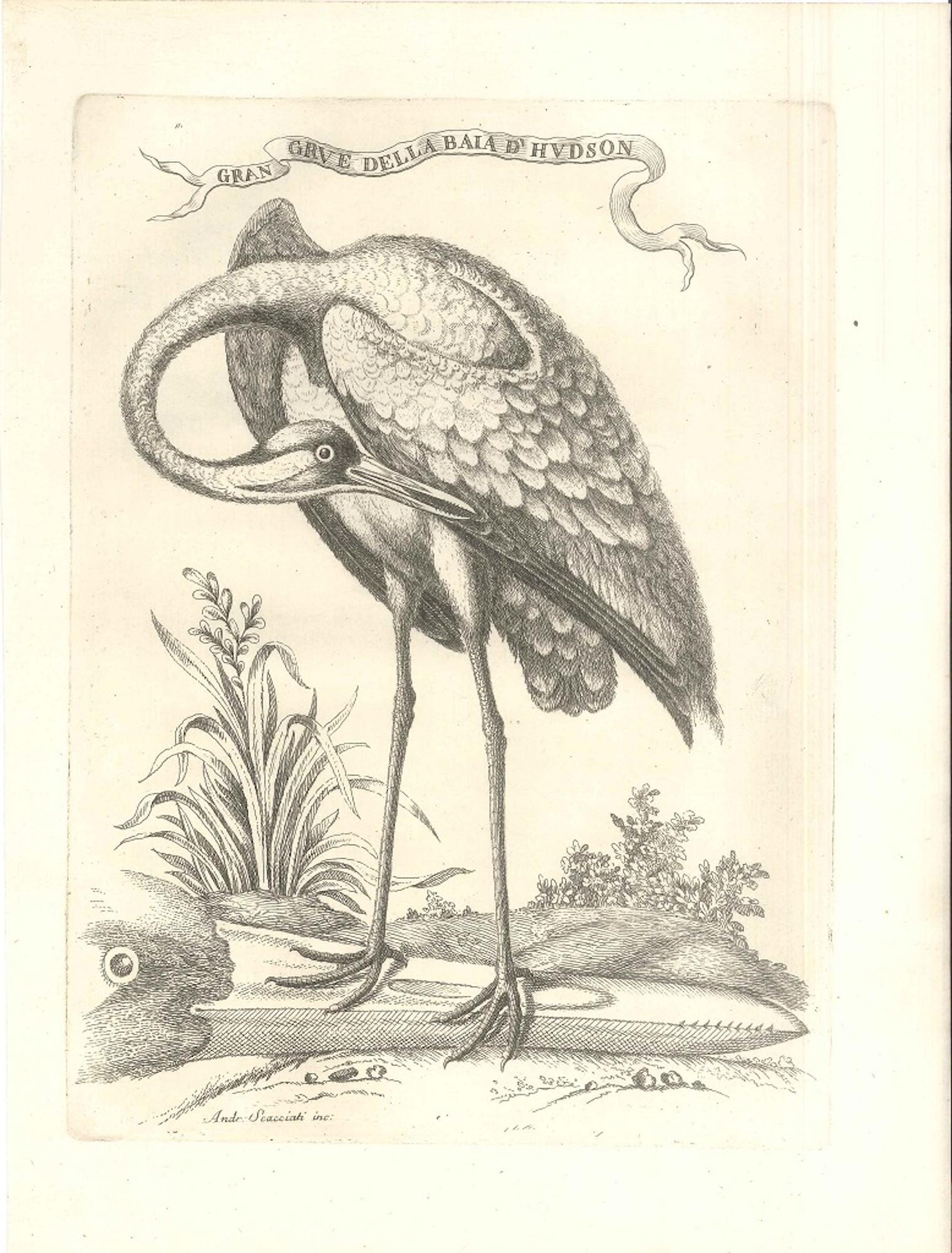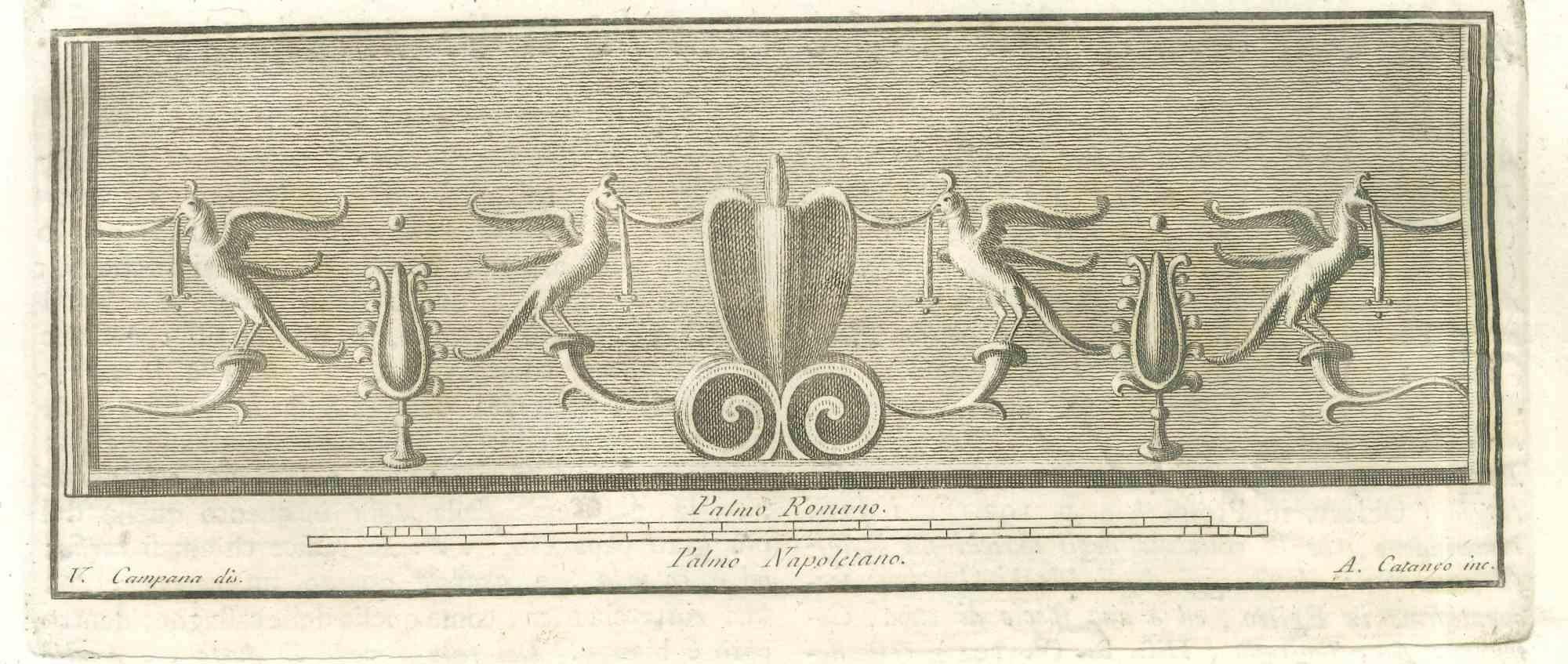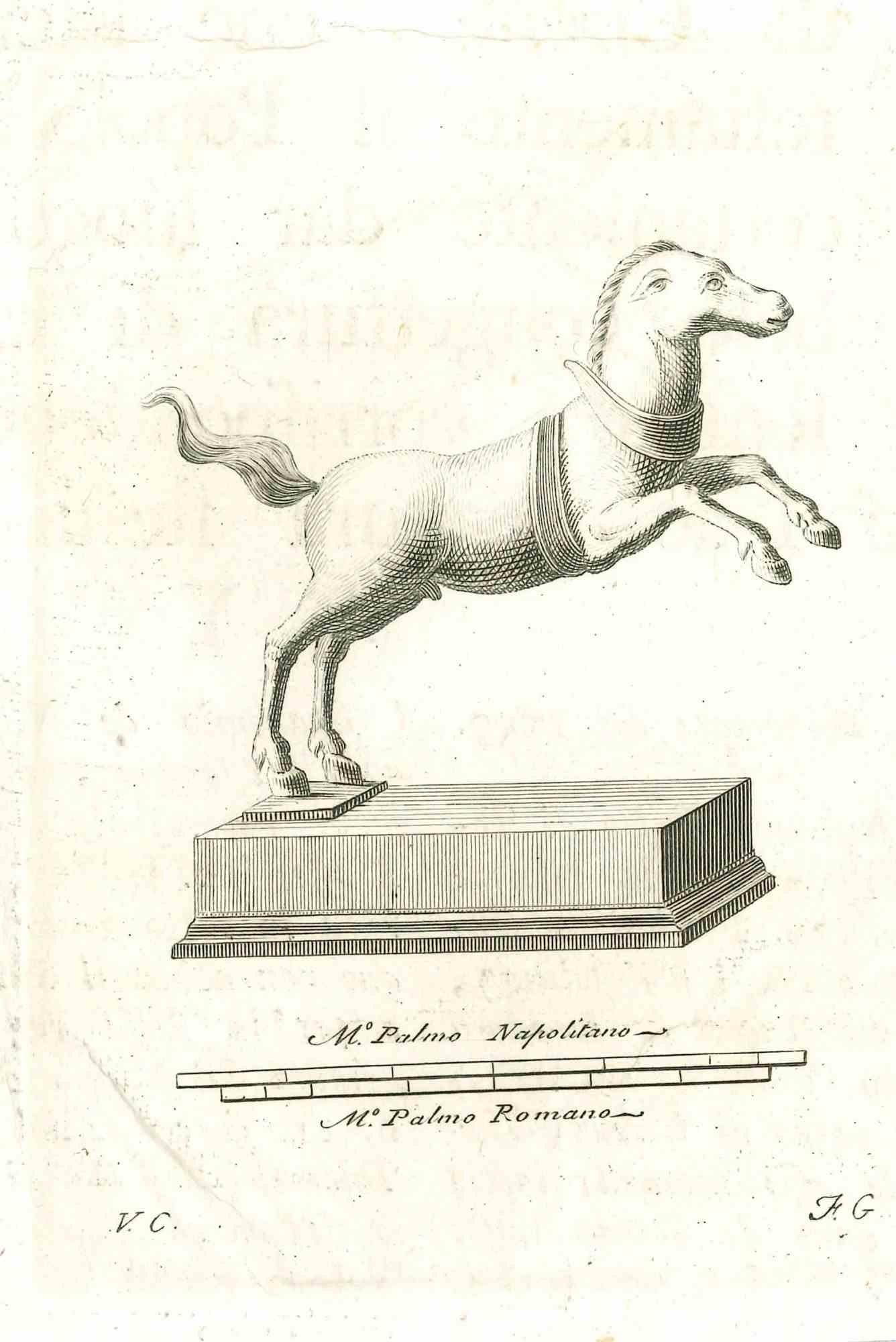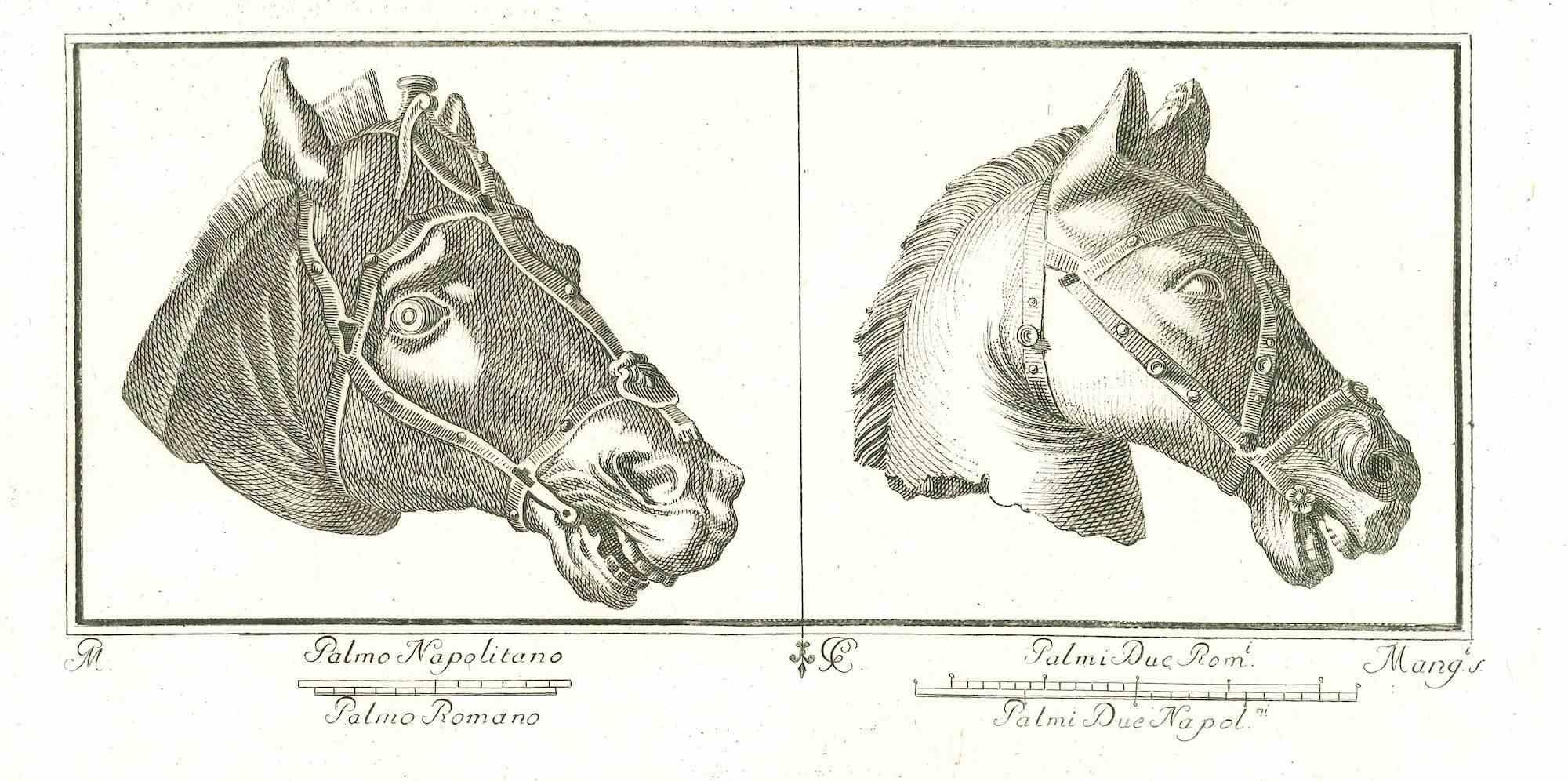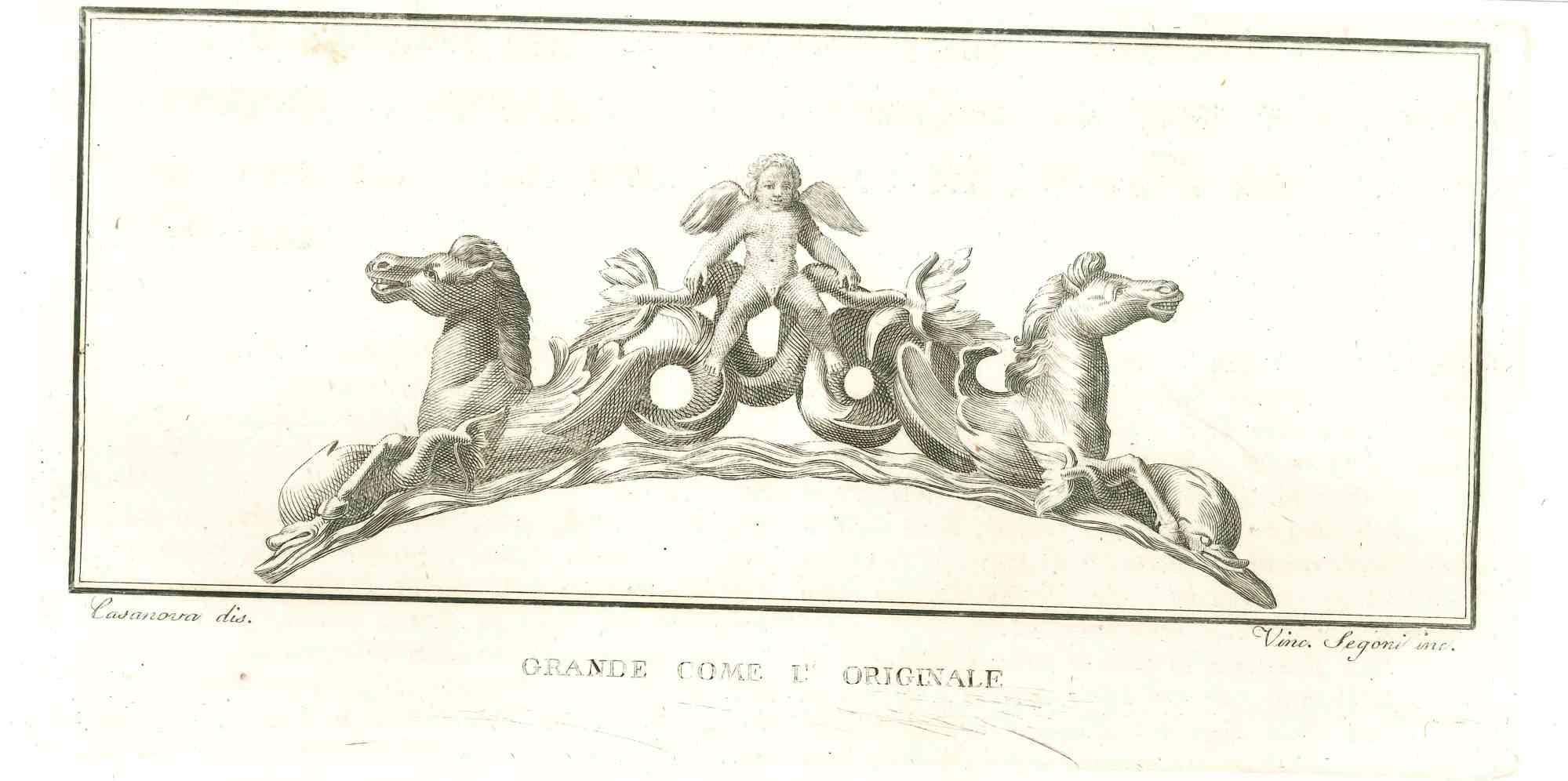Items Similar to Ancient Roman Statue - Original Etching - 18th Century
Want more images or videos?
Request additional images or videos from the seller
1 of 2
UnknownAncient Roman Statue - Original Etching - 18th CenturyLate 18th Century
Late 18th Century
About the Item
Ancient Roman Statue, from the series "Antiquities of Herculaneum", is an original etching on paper realized by anonymous artist in the 18th century.
Signed on the plate on the lower right.
Good conditions but aged.
The etching belongs to the print suite “Antiquities of Herculaneum Exposed” (original title: “Le Antichità di Ercolano Esposte”), an eight-volume volume of engravings of the finds from the excavation of the ruins of Herculaneum in the Kingdom of Naples (now Campania, Italy).
It was published between 1757 and 1792 by the Regia Stamperia, and copies were delivered to selected recipients across Europe.
Despite the title, the Antiquity of Herculaneum shows objects from all the excavations undertaken by the Bourbons in the Gulf of Naples. These include Pompeii, Stabia and two sites of Herculaneum: Resina and Portici.
The Bourbon King Carlo appointed fifteen scholars creating a new “Herculaneum Academy” to study the artifacts and publish the results of the archaeological excavations of the sites.
The engravings are of high quality and the accompanying text shows a large scholarship.
They were realized by 25 prominent artists involved by the King to prepare drawings and engravings on the finds, among which we can find Giovanni Elia Morghen, Carlo Nolli, Luigi Vanvitelli and Giovanni Battista Casanova.
The “Antiquities” was designed more to amaze readers with the quality of the objects in the collection of the King of Naples than to be used in research., following and increasing the interest of 18th century society for the classical culture and Art in particular.
Through the exaltation of the classical concept of proportions and harmony, the book was of inspiration to the neoclassical movement in Europe, giving artists and decorators access to a huge shop of Hellenistic motifs.
Ref.:
National Gallery (Washington), Mark J. Millard Architectural, IV (2000), no. 1;
L. Garcia y Garcia, Nova bibliotheca pompeiana (2 v., 1998);
Royal Institute of British Architects, British Architectural Library ... Early printed books, 1 (1994), no. 112.
U. Pannuti, 'Incisori e disegnatori della Stamperia Reale di Napoli nel secolo XVIII: la pubblicazione delle Antichità di Ercolano', in Xenia antiqua, 9 (2000), p. 151-178;
V. Trombetta, 'L'edizione de Le Antichità di Ercolano esposte' in Rendiconti dell'Accademia di Archeologia, lettere e belle arti di Napoli , 59 (1984), p.151-172.
- Creation Year:Late 18th Century
- Dimensions:Height: 4.73 in (12 cm)Width: 10.24 in (26 cm)Depth: 0.08 in (2 mm)
- Medium:
- Movement & Style:
- Period:
- Framing:Framing Options Available
- Condition:Insurance may be requested by customers as additional service, contact us for more information.
- Gallery Location:Roma, IT
- Reference Number:
About the Seller
4.9
Platinum Seller
These expertly vetted sellers are 1stDibs' most experienced sellers and are rated highest by our customers.
1stDibs seller since 2017
6,757 sales on 1stDibs
Typical response time: 2 hours
- ShippingRetrieving quote...Ships From: Monaco, Monaco
- Return PolicyA return for this item may be initiated within 14 days of delivery.
More From This SellerView All
- Decoration With Animals - Etching by Luigi Aloja - 18th CenturyLocated in Roma, ITDecoration With Animals is an Etching realized by Luigi Aloja (1783-1837). The etching belongs to the print suite “Antiquities of Herculaneum Exposed” (original title: “Le Antichit...Category
Late 18th Century Old Masters Figurative Prints
MaterialsEtching
- Gran Grue Della Baia d'Hudson - Etching by Andrea Scacciati The YoungerBy Andrea ScacciatiLocated in Roma, ITGran Grue Della Baia d'Hudson is a beautiful black and white etching on laid paper realized by the Italian artist, Andrea Scacciati. Title engraved on the higher margin, inscription ...Category
1760s Old Masters Animal Prints
MaterialsEtching
- Animals Pompeian Fresco - Etching by Aniello Cataneo - 18th CenturyLocated in Roma, ITAnimals Pompeian Fresco from "Antiquities of Herculaneum" is an etching on paper realized by Aniello Cataneo in the 18th Century. Signed on the plate. Good conditions. The etching...Category
18th Century Old Masters Figurative Prints
MaterialsEtching
- Ancient Roman Statue - Original Etching by Vincenzo Campana - 18th CenturyBy Vincenzo CampanaLocated in Roma, ITAncient Roman Statue, from the series "Antiquities of Herculaneum", is an original etching on paper realized by Vincenzo Campana in the 18th century. Signed on the plate on the low...Category
Late 18th Century Old Masters Figurative Prints
MaterialsEtching
- Ancient Roman Statue - Original Etching - 18th CenturyLocated in Roma, ITAncient Roman Statue, from the series "Antiquities of Herculaneum", is an original etching on paper realized by an anonymous artist in the 18th century. Signed on the plate on the ...Category
Late 18th Century Old Masters Figurative Prints
MaterialsEtching
- Ancient Roman Statue - Original Etching by Vincenzo Segoni - 18th CenturyLocated in Roma, ITAncient Roman Statue, from the series "Antiquities of Herculaneum", is an original etching on paper realized by Vincenzo Segoni in the 18th century.Signed on the plate on the lower r...Category
Late 18th Century Old Masters Figurative Prints
MaterialsEtching
You May Also Like
- "Nohubo remedio" (There was no remedy) - Etching and Aquatint on PaperBy Francisco GoyaLocated in Soquel, CA"Nohubo remedio" (There was no remedy) - Etching and Aquatint on Paper Bold 3rd or 4th edition, circa 1868-1878, with burnished aquatints, drypoints etching, and engravings by Franc...Category
1790s Old Masters Figurative Prints
MaterialsEngraving, Paper, Etching, Aquatint
- Market DayBy Marius BauerLocated in Storrs, CTMarket Day. 1889. Etching and drypoint. Wisselingh 42. 7 5/8 x 5 13/16 (sheet 8 3/8 x 6 3/8). Edition 100. Printed on cream laid paper. Mat burn and toning ...Category
Late 19th Century Old Masters Figurative Prints
MaterialsEtching
- A Fairy TaleBy Marius BauerLocated in Storrs, CTA Fairy Tale. 1897. Etching. Wisselingh 18. 2 3/4 x 4 3/8 (sheet 5 9/16 x 7 5/8). Edition 100, #51. A rich impression printed on cream laid paper. Signed an...Category
Late 19th Century Old Masters Figurative Prints
MaterialsEtching
- After Giuseppe Cesari (1568-1640) After St George Slaying the DragonBy Giuseppe CesariLocated in Sydney, NSWAbout the Painting: St George Slaying the Dragon is a genre painting derived from the legend, St George, a soldier venerated in Christianity who battles and defeats a dragon. The tale recalls a dragon who extorted a village of their worldly possessions, once the villagers had depleted all their livestock, money and trinkets they began to sacrifice humans to the dragon as a tribute once a year. The villagers were content with the arrangement until a princess was chosen as the next offering. St George then rescues the princess and ultimately he slays the dragon, thus liberating the oppressed villages. A moral anecdote of good over evil and a genre work that has been explored by artists since its conception, with iconography throughout European art movements for hundreds of years and still up until this day. About the Artist: Giuseppe Cesari...Category
16th Century Old Masters Figurative Prints
MaterialsMetal
- After Giuseppe Cesari (Italian 1568-1640) St. George Slaying the DragonBy Giuseppe CesariLocated in Sydney, NSWArtist: After Giuseppe Cesari (Italian 1568-1640) Title: St. George Slaying the Dragon Medium: Giclée Fine Art Print on Ilford Galerie Textured Cotton ...Category
16th Century Old Masters Figurative Prints
MaterialsArchival Ink, Rag Paper
- La Poursuite by Orovida Pissarro - Animal etchingBy Orovida PissarroLocated in London, GBLa Poursuite by Orovida Pissarro (1893-1968) Etching with aquatint 17.2 x 12.5 cm (6 ³/₄ x 4 ⁷/₈ inches) Signed and dated lower right Orovida 1917 Inscribed lower left Final State Trial proof no. 1 Artist biography Orovida Camille Pissarro, Lucien and Esther Pissarro’s only child, was the first woman in the Pissarro family as well as the first of her generation to become an artist. Born in Epping, England in 1893, she lived and worked predominantly in London where she became a prominent member of several British arts clubs and societies. She first learned to paint in the Impressionist style of her father, but after a brief period of formal study with Walter Sickert in 1913 she renounced formal art schooling. Throughout her career, Orovida always remained outside of any mainstream British art movements. Much to Lucien's disappointment she soon turned away from naturalistic painting and developed her own unusual style combining elements of Japanese, Chinese, Persian and Indian art. Her rejection of Impressionism, which for the Pissarro family had become a way of life, together with the simultaneous decision to drop her famous last name and simply use Orovida as a ‘nom de peintre’, reflected a deep desire for independence and distance from the weight of the family legacy. Orovida's most distinctive and notable works were produced from the period of 1919 to 1939 using her own homemade egg tempera applied in thin, delicate washes to silk, linen or paper and sometimes embellished with brocade borders. These elegant and richly decorative works generally depict Eastern, Asian and African subjects, such as Mongolian horse...Category
1910s Animal Prints
MaterialsAquatint, Etching
Recently Viewed
View AllMore Ways To Browse
Ancient Roman
Large Figurative Statues
Old Antique Statues
Large Statue Italy
Large Italian Statue
Florence Italy Dealers
Grande Table Vintage
Cat Vintage Dress
Large Picture Frame Spanish
Keep Calm
Retro French Posters Reproductions
Nude Veil
Vintage Easter Painting
Vintage Easter Paintings
Provence Retro Poster
Cow Sculpture Large
Crossroads Vintage
Cafe Vintage Poster
